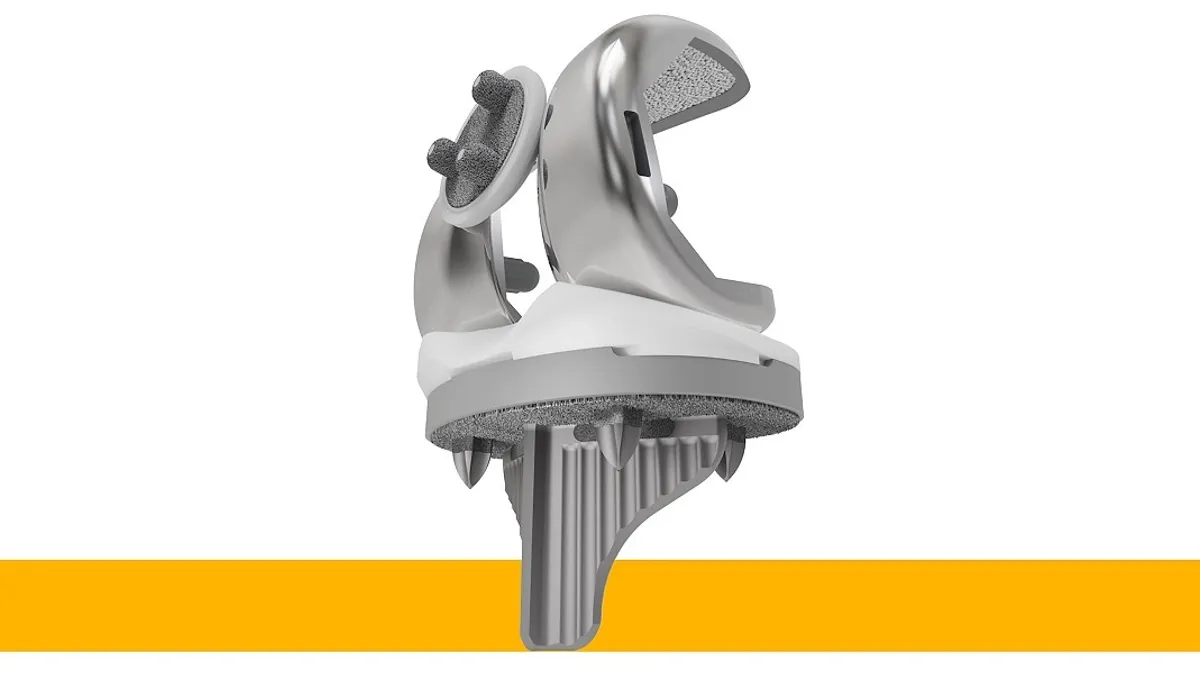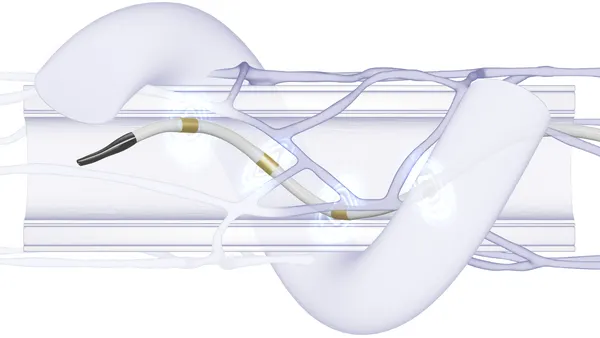Editor's Note: In a previous version of this article, general manager of Stryker's knee business Lisa Kloes said the company had more than 300 surgical robots in the ambulatory surgery center setting. The company has retracted that statement and declined to provide additional details.
Stryker’s knee segment, which made up 11% of its total revenue last year, has been a big part of the company’s growth out of the pandemic. Knee sales grew by 13% last quarter and by 8% in 2022.
The company will report earnings for its third quarter on Thursday.
Lisa Kloes, general manager of Stryker’s knee business, credited a head start in cementless knee procedures as giving the company an edge against the competition. Stryker has implanted more than 1 million cementless knees since first launching the product a decade ago. Kloes also talked about the growing role of the company’s Mako surgical robot and future trends in orthopedics.
This interview has been edited for length and clarity.

MEDTECH DIVE: Stryker reported 8% growth across its knee business in 2022. What contributed to that?
LISA KLOES: We're seeing greater than previous market growth rate just coming out of the pandemic. There’s a backlog of patients due to the pausing of what was considered the elective procedures. Based on that, we know that there have been higher growth numbers than ever. Even with that, we're outpacing the competition both in the U.S. and around the globe for growth. The contributing factors for that have really been the combination of Mako robot and our cementless knee.
We continue to see the percentage of our knees put in with Mako climb. We're at 58%, and we expect to be at 60% by year end. Fifty percent of our knees are put in cementless, and when paired with Mako, closer to 60%, which really highlights the perfect combination between our cementless technology and the precision of Mako smart robotics.
Is there still a backlog of cases?
I think that there's certainly some backlog still, which is driving the higher growth rate than what we've traditionally seen in orthopedics and joint replacement. However, it's not as much of a bottleneck as it used to be as far as having the OR time available to the cases.
When I talk to our surgeon customers, they're booked out three, four months on average. So, we do see there's still high demand and somewhat of a wait for most surgeons to get the procedure done. We're expecting next year for that backlog to taper off a little bit but still for our overall growth rate to be higher than pre-COVID rates. We plan on growing faster than the market.
Where are you seeing demand for your Mako robots? More from hospitals or ambulatory surgery centers?
We had initially thought that there wouldn't be as high of a demand in ASCs. We've had a great deal of success there.
We have seen significant growth in academic medical centers in the last few years too, where the fellowship programs for joint replacement, 70% of those have access to a Mako. What we're seeing is the fellows, when they're looking for a program, they're actively seeking out programs that have robotics.
Can you explain more about how cementless knees work, and why they are important?
A cemented knee is similar to putting grout in when you tile a bathroom floor. You put it in to connect to surfaces for stability. But that grout — or in this situation, cement — can fail over time and become loose. With cementless, it's biologic fixation. The bone grows into the cementless implant, which provides a stronger and more stable integration and construct.
Because we've been on the market with this particular design now for 10 years, we have data that supports the survivorship and the clinical benefits of cementless. Five years out, we have 99% survivorship, which is greater than any other cemented implant or cementless implant that's available. Since we just reached the 10-year milestone, we’re expecting to see more data released as well. We do expect those to be quite favorable.
What new products do you have on the horizon?
We just released a new revision product called triathlon hinge. It's in limited market release right now, and we're looking to go into full market release next year.
This is a simpler system. It's very versatile; you can go from a primary revision to a hinge to a distal femoral or proximal tibia implant. It has full convertibility from these different procedures without needing to remove the base plate. It's something that surgeons have been really excited about, and we’re getting great feedback for this early market release.
What trends are you watching in the market?
Something that's really of interest to us is the trend of procedures going to the ASC. We do see it happening. It's just a matter of how fast it’s going to continue.
In the hospital setting, efficiency is important. It's even more important in the ASC because you have fewer rooms and they try to turn as much as they can for procedures, and they don't have the space for the implants and instruments to have a lot of vendors in the ASC. So, we do look at ASC-specific strategies to make sure that we can optimize our footprint and also provide the great level of support and products that we do at the other sites of service.













